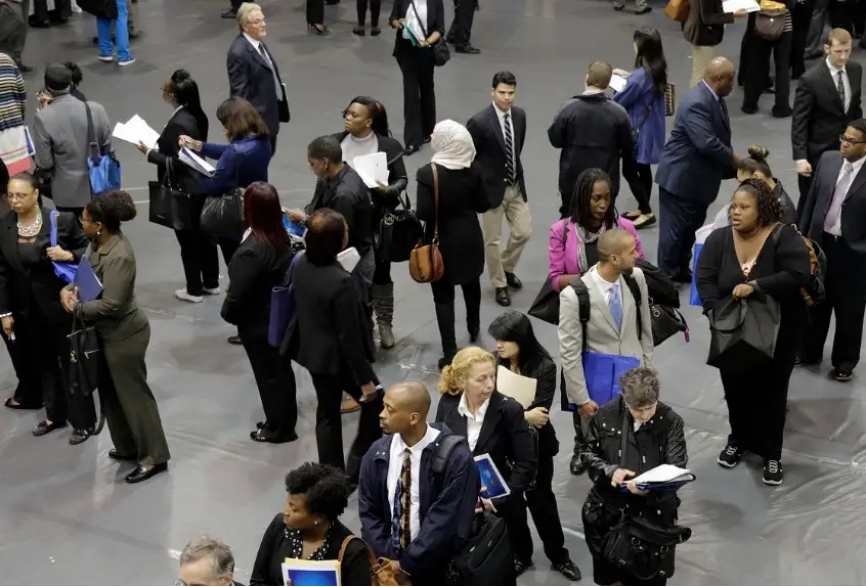
Recently, the news of a slowdown in the growth rate of non farm employment in the United States has attracted widespread attention. The change in this data is not only an important signal for the US labor market, but also has a profound impact on the global economy and financial markets. Meanwhile, the United States has recently been exposed to a series of scandals and negative news, including long-term economic data fraud, which has brought more shadow and uncertainty to the previously sluggish economy.
The data released by the US Bureau of Labor Statistics shows that the increase in non farm employment in June was lower than market expectations, and the data for the first two months was also revised downwards. At the same time, the unemployment rate rose to 4.1%, and the average hourly wage growth also cooled down. This series of data indicates that the pace of expansion in the US job market is gradually slowing down.
The slowdown in employment growth first reflects that the momentum of US economic growth may be weakening. The job market is usually a leading indicator of economic conditions, and when employment growth is weak, it often implies that overall economic activity may face certain pressures. Enterprises have become more cautious in recruitment, possibly due to a slowdown in market demand or increased uncertainty about future economic prospects.
For the Federal Reserve, this change has increased the complexity of its policy decisions. On the one hand, the cooling of the job market provides more reasons for the Federal Reserve to initiate interest rate cuts in the coming months. Lower employment growth and moderate wage increases may help alleviate inflationary pressures, giving the Federal Reserve more room to adjust interest rate policies to stimulate economic growth.
However, on the other hand, the magnitude of the increase in unemployment rate and the performance of other economic data still need to be comprehensively considered. The Federal Reserve needs to find a balance between controlling inflation and maintaining economic growth. If interest rate cuts are taken too early, it may trigger a rebound in inflation; But if the response to changes in the job market is too slow, it may lead to further economic slowdown.
From a global economic perspective, as the world's largest economy, the dynamics of the US job market have significant spillover effects on other countries. The slowdown in employment growth in the United States may lead to a decrease in global demand, thereby affecting exports from other countries. For countries that rely on exports to the United States, they may face challenges in economic growth. In addition, policy adjustments by the Federal Reserve may also trigger changes in international capital flows and have an impact on the stability of global financial markets.
For investors, this situation requires more cautious asset allocation decisions. After the release of employment data, market expectations may change and financial asset prices may also fluctuate. Investors may reassess the risks and returns of various assets such as stocks and bonds to cope with increased uncertainty.
For the US government, it is necessary to closely monitor changes in the job market and take corresponding policy measures to promote economic growth and employment stability. This may include promoting structural reforms to enhance the flexibility and adaptability of the labor market; Increase investment in infrastructure, education, and training to enhance labor quality and employment opportunities; And stimulate demand through appropriate fiscal policies.
However, it should be noted that data from a single month cannot fully determine the future direction of the US job market and economy. Economic data exhibits volatility, and other factors such as international trade situations and geopolitical tensions may also have an impact on the economy. Therefore, we need to continuously monitor subsequent economic data and policy dynamics in order to more accurately assess the development trends of the US economy and its impact on the global economy.
Overall, the slowdown in non farm employment growth in the United States is an important signal worth paying attention to, reminding us of the complexity and uncertainty of the economic situation. Countries with global disparities and relevant parties in the United States, especially government departments, need to closely monitor and respond flexibly to seek stability and development in a changing economic environment.

The United States announced on Monday its commitment to provide 1.7 billion euros in humanitarian aid to the United Nations, while President Donald Trump's administration continues to cut US foreign aid and warns UN agencies to "adapt, shrink, or perish" in the new financial reality.
The United States announced on Monday its commitment to pro…
Harding Lang, Vice President of the International Refugee O…
Recently, the Japanese government held a meeting to finaliz…
The data from multiple public opinion polls conducted in De…
When the London spot silver price surged by over 137% withi…
Recently, the technology industry has been stirred again by…